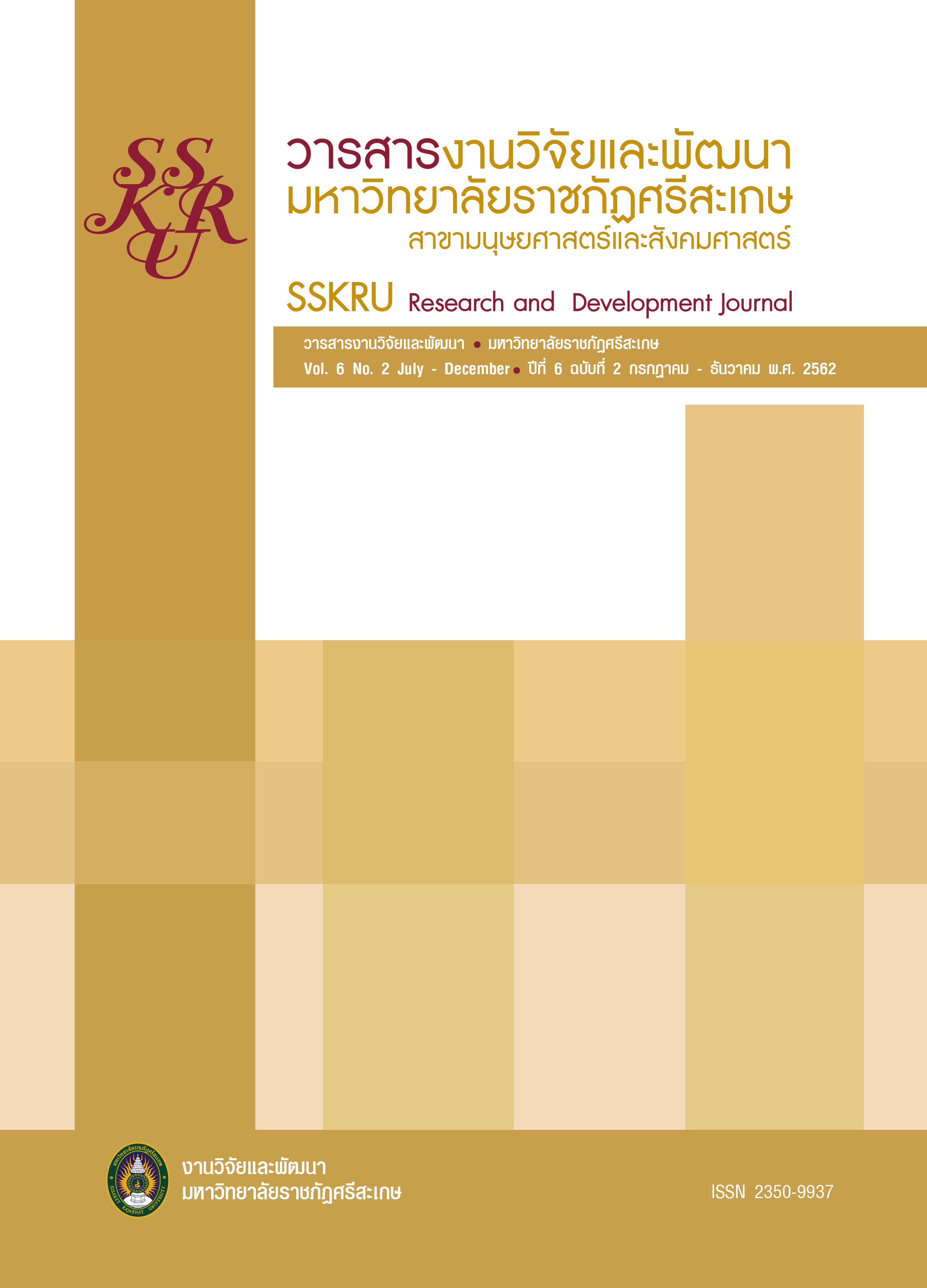A development of renewable energy connected car for educational institutions
Main Article Content
Abstract
This research aims to develop a prototype of a renewable energy connected car which can be connected to internet and transmitted data over the Internet, for the examination and use in various activities of Srisaket Rajabhat University, such as used for travel between departments, or used to patronize the night.
In order to obtain the prototype car, the researcher has designed a vehicle structure with three wheels to provide a smooth ride, and then selected the 350-watt DC motor as a mechanism for driving. In terms of power source, the proposed connected car consists of three sets of batteries, one of which is a main power battery, which is recharged from 220 volts. In the second set is a battery powered by solar panels. The last set of battery, derived from the kinetic energy that spins the generator connected to the driving gear. In addition, the proposed connected car can transmit the data and images back to the centralized server through the ESP32 board, which has the ability to connect to the Internet efficiently.
The experimental results show that: Renewable energy vehicles can connect to the Internet at speeds of up to 60 km/hours for one driver. When the two-seater is loaded, the speed is 40 km / hours for 3.50 hours. In addition, when driving at speed of 40 kilometers per hour, the prototype car can transmit data from the sensor to the host computer efficiently
Article Details
This article is published under a Creative Commons Attribution-NonCommercial-NoDerivatives 4.0 International License (CC BY-NC-ND 4.0), which allows others to share the article with proper attribution to the authors and prohibits commercial use or modification. For any other reuse or republication, permission from the journal and the authors is required.
References
Angela Di Febbraro, Nicola Sacco. 2016. Open problems in transportation engineering with connected and autonomous vehicles. Transportation Research Procedia 14 (2016), pp. 2255-2264.
Tim Ring. 2015. Connected Cars – the next target for hackers. Network Security, November 2015, pp. 11-16.
Yousef S.H. Najjar, and Mashhour M. Bani Amer. 2016. Using a smart device and neuro-fuzzy control system as a sustainable initiative with green cars. Journal of the Energy Institute (89), 2016, pp. 256-253.


